Reotahi: Where Tides Go Fast
An old issue of Dive NZ got to my hands some time ago. There was that article about a good shore diving in Whangarei in the magazine. The author liked it a lot, also he said the place was to become a marine reserve soon. I checked the Department of Conservation website and it was true, the area was a reserve.
A couple of things had to happen to help me to make the decision to actually go there. My business friend Ilja Ruppeldt gave me a voucher for an accomodation in a hotel in Whangarei. We broke the trolley for our sit-on-top kayak and our outboard engine needed a service (It’s still in the workshop!). That meant no kayak diving, no boat diving. The result was simple. A family weekend trip to Whangarei … with Saturday spend at the marine reserve.
I got into water when the incoming tide was running. If you check the map you can see the place is in the mouth of the harbour, where the tide flow should be the strongest. However, I could not feel anything at first. I passed the flat sandy shallows, got to the sea weeds with spotties and parore. It was disappointing. Water was murky, the visibility was 2-3 m, everything was covered with the dust typical for harbours around Auckland.
I moved a bit further from the shore along the bottom that changed into a quite steep slope. Suddenly I could feel a strong current. I could hardly swim against it. Much more interestingly, schools of goatfish appeared on the sand. Also I could see a couple of dark blobs in the deeper water. I slowly moved towards them. They were rocks covered with kelp on the top and invertebrate colourful growth beneath it. Exploring the area I hat to crawl, it was impossible to swim in that current. But the sponges were beautiful. Big and colourful.
Then a huge school of small fish surrounded me at once. It took me less than a second to realise why. A school of kingfish was circling around us chasing the fish. After a short while the kingfish disappeared. So did the small fish. The same pattern kept repeating for the whole time I spent among the sponges.
On my way back to the shallows I found a couple of rocks with nice vertical walls and dark overhangs. They were, as they should be, all covered with colourful invertebrates … purple, orange, yellow, red, white … and had plenty of reef fish around.
I surfaced exhausted from fighting the current, but excited from what I could see in such a short distance from the shore.
I really recommend the dive. The place is easy to find as it’s a marine reserve, so you can follow the street signs. It’s a quite steep footpath to get to the beach from the car park. If it was winter I would have kit myself up in the carpark and walked down the footpath. As it was summer and the water was very warm I brought all my gear to the beach, assembled it there, put my wetsuit on in the water and went for the dive. There are two main diving spots in the reserve. You can dive either between the shore and the Motukaroro island, or in the main harbour channel. To dive the main channel I would want to have a boat support, because of the distance, the current and the depth … it can reach 30 m. The shore location is much shallower, I reached 11 m during my dive. It would be ideal to dive the place some time before the high tide, when the water flow easies. I was diving when the current was still strong. It was manageable, though exhausting. Visibility was not helpful either, but the discomfort was compensated by the surprisingly rich marine life.

Whangarei Harbour mouth with Marsden Point Oil Refinery in the background, the view is from Mount Manaia.
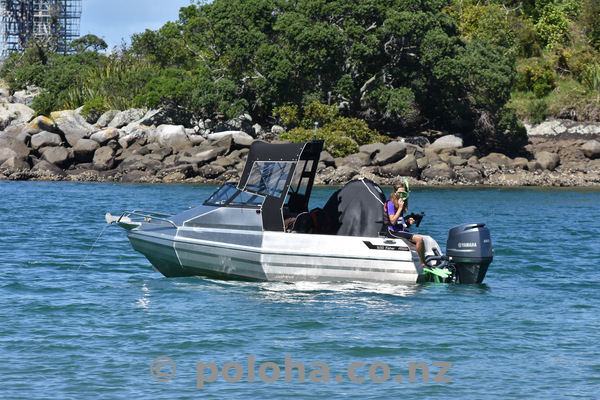
Getting ready for snorkeling in the channel between the shore and Motukaroro Island.

Murky water with schools of juvenile snapper and dusty seaweeds in the shallows, the dive looked disappointing at first.
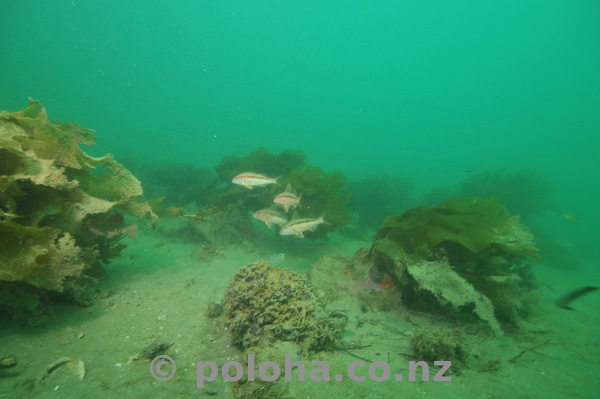
Goatfish are plentiful on the sand among rocks and sponges.
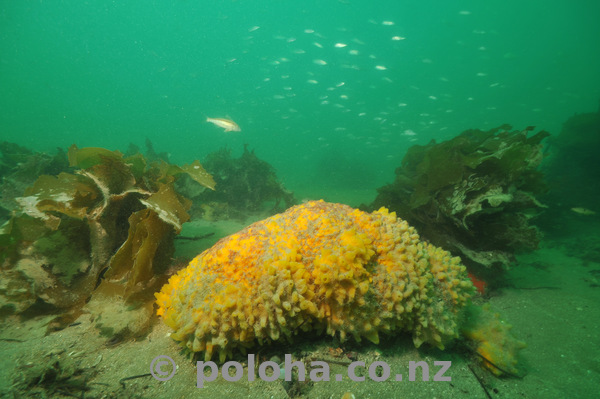
Large sponges are common in the deeper part of the channel.
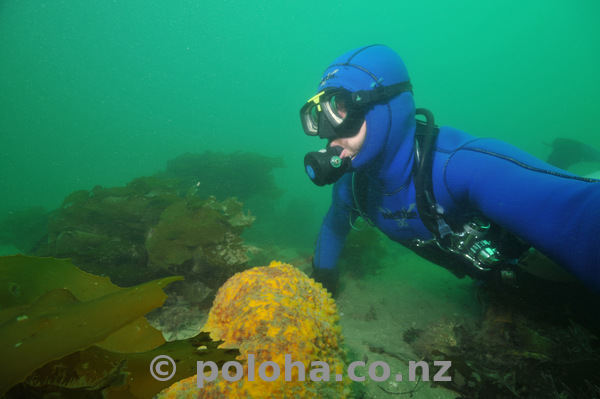
The kelp fronds are bent to the ground by the strong tidal flow. I had to hold on to the rocks as I was not able to swim against the current.

A rock covered by rich invertebrate growth in the deeper part of the channel.
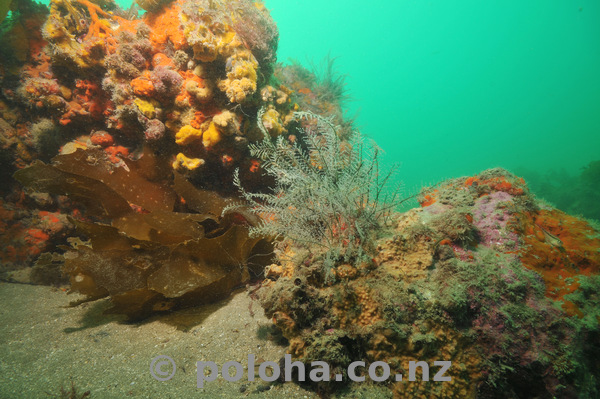
A group of rocks covered with colourful sponges, tunicates, hydroids and bryozoans.
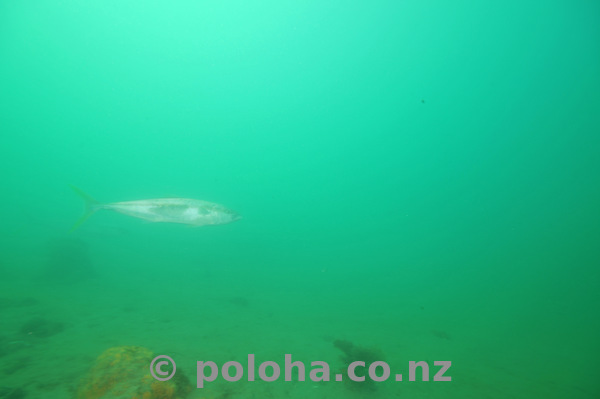
Kingfish chasing juvenile fish in the channel. The specimen was only about two-and-half metre from the camera, but the visibility was poor.

Schools of small fish trying to escape the hunting kingfish.
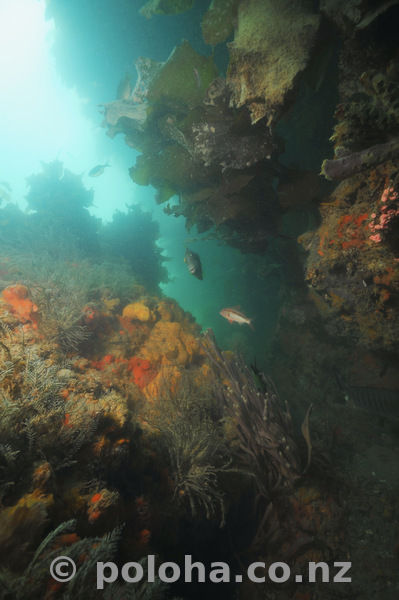
Vertical walls with large sponges and reef fish around.